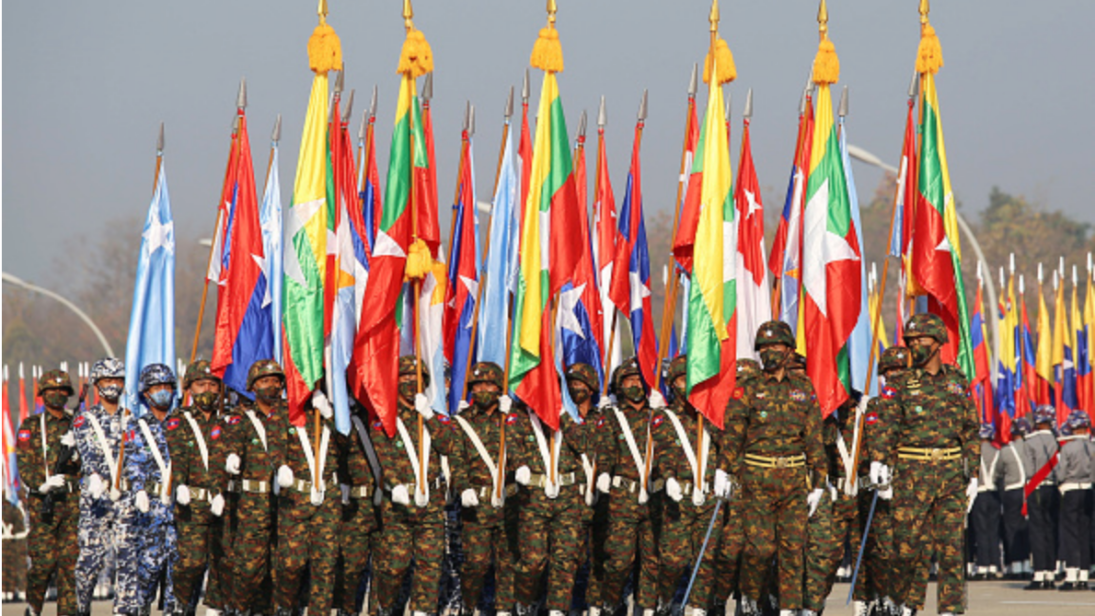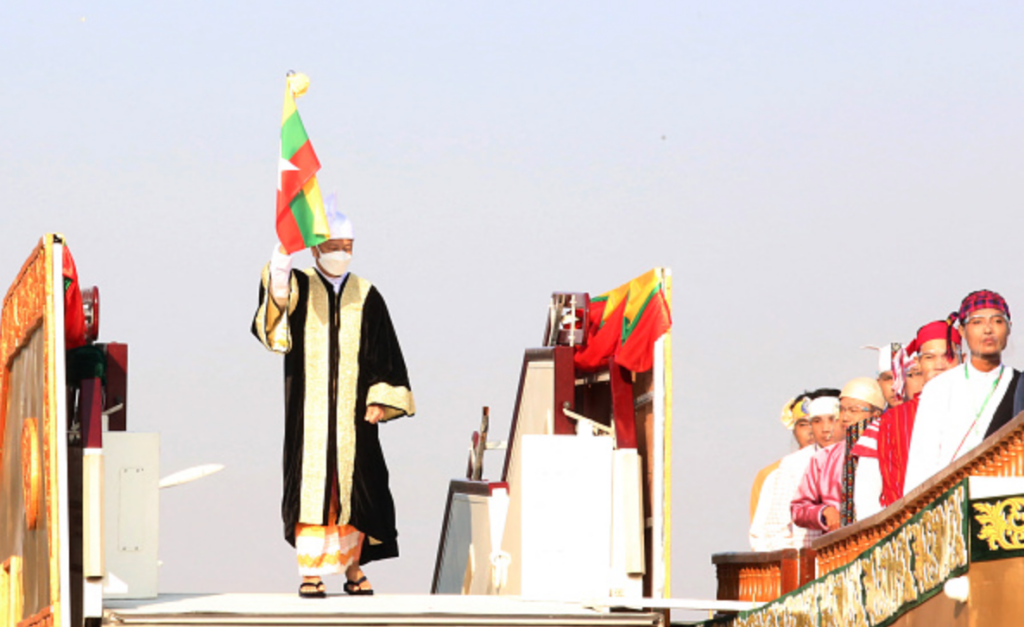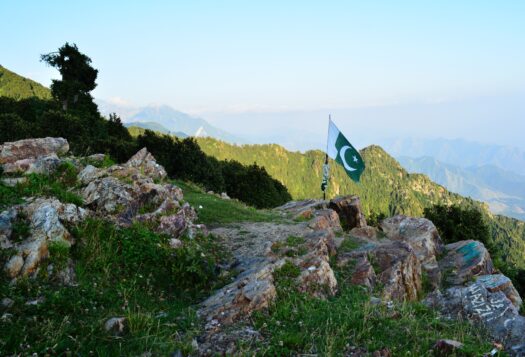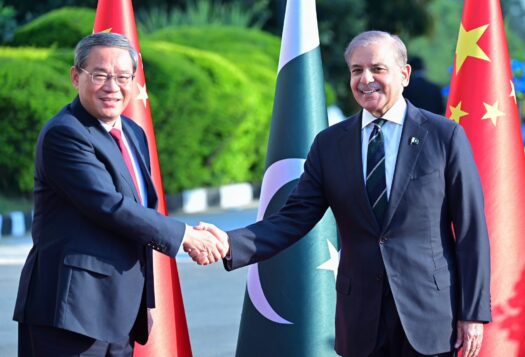
It has been a year since the military in Myanmar, in a dramatic coup, overthrew the elected government, dissolved the parliament, and detained several senior members of the National League for Democracy (NLD), including President Win Myint and State Counsellor Aung San Suu Kyi. The takeover, initiated at the behest of the commander-in-chief, Min Aung Hlaing, was instantly met with fierce resistance in both urban and rural areas. Within a month, signs of armed resistance emerged and by the summer of 2021, several armed civilian militias had mushroomed across the length and breadth of Myanmar.
Unlike the older Ethnic Armed Organizations (EAOs) who had been seeking political autonomy within a federalized state structure for decades, these new militias — or People’s Defence Forces (PDF) have the more revolutionary goal of completely replacing the current military. This makes them a formidable enemy for the junta, which hardly commands any legitimacy amongst the majority of the people, including the majority ethnic Bamar population. From rising troop casualties to mass defections of historic proportions, Min Aung Hlaing’s military is confronted with a serious existential threat today. It is growing increasingly frustrated, and that’s showing.
A Growing Resistance: Some Numbers
In September 2021, after the National Unity Government (NUG), the shadow government made up of elected lawmakers, announced an “all-out war” against the military, the military declared its own grand counteroffensive and not-so-modestly named it “Operation Anawrahta” after the founding-emperor of the Pagan Kingdom (who is also widely deemed the father of the Burmese nation). The noted military expert Anthony Davis called it “an onslaught for the ages.” However, far from crushing the countrywide insurgency, the junta has since then faced a rapidly growing spate of attacks from civilian militias across the country.
According to data collated by the Myanmar Peace Monitor (MPM), which began publishing PDF-specific data only in June last year, there have been at least 373 clashes between the PDFs and the military between June-December 2021. Figures provided by the NUG, which started publishing monthly conflict statistics in July, are astronomically higher — more than 3,200 clashes in the July-December 2021 period.
According to my own database (based on open-source media reports, third party reports, and social media bulletins), PDFs and other unidentified groups have independently attacked junta targets more than 450 times between March 2021 and January 20, 2022. This is a conservative figure, as it folds multiple clashes unfolding over successive days into single events and does not count minor incidents. ACLED provides a more granular count—5316 clashes (including PDF-military, EAO-military, EAO-EAO, and unilateral attacks by junta forces) between February 1, 2021 and January 14, 2022.
Long wars become even more difficult for the primary aggressors when they lack local support or popular legitimacy, which is certainly the case with the military in Myanmar today.
It isn’t just the PDFs that are independently attacking the military. Four EAOs—the Kachin Independence Organisation (KIO)/Army (KIA), the Karenni National Progressive Party (KNPP)/Karenni Army (KA), the Chin National Front (CNF)/Army (CNA) and the Karen National Union (KNU)/Liberation Army (KNLA)—have also allied with PDFs to join the revolutionary fray. According to my data, EAOs and PDFs have launched at least 45 joint operations against the military between March 2021 and January 20, 2022 in various regions and states.
In terms of conflict hotspots, Sagaing Region has seen the most number of incidents (at least 215, combining both PDF-military and EAO-military) between March 2021 and January 20, 2022, followed by Magway Region (at least 45) and Chin State (at least 40). MPM data between June-December 2021 points towards a similar trend:138 PDF-military clashes in Sagaing Region, followed by Magway Region (55), Chin State (50) and Karenni State (39).
The resistance has also launched attacks against junta targets in major urban center and extended suburban areas. Between March 2021 and January 20, 2022, there were at least 112 attacks in Yangon Region and 37 attacks in Mandalay Region. The Naypyidaw capital region has seen at least 13 attacks in that period, despite being heavily secured. Militias have also launched daring attacks at high-level junta targets, such as senior ministers and highly-secure administrative buildings.
The junta has also suffered significant personnel loss. Exact figures are not available but according to my data, at least 3,700 junta soldiers, police, administrators, and informers have been killed in clashes, raids, assassinations, and other attacks since the coup. The NUG provides a far higher number: more than 5,800 troops killed between July 2021 and January 6, 2022. The junta’s estimates, needless to say, are much lower.
Growing frustration
Despite all its advanced war-fighting capabilities, decades of combat experience, and grand statements about swiftly defeating the PDFs, the junta is far from suppressing the armed resistance. Its inability to stamp out the PDFs and reestablish comprehensive territorial dominance has only added to its frustration. Several high-intensity guerrilla attacks on convoys, foot patrols, outposts, and strategic bases by the resistance have inflicted serious damage on the military’s assets and rank-and-file. In particular, landmine attacks (including remote-controlled ones) on slow-moving military convoys in the hilly and remote terrains of Chin State and Sagaing Region have resulted in high single-event casualties.
For example, on June 6, Chin Defence Forces (CDF) rebels killed around 50 soldiers in a single ambush on a convoy headed to the besieged hilltop town of Mindat. On 19 September, a combined force of various PDFs and the KA killed around 30 junta soldiers in an ambush on a 40-vehicle military convoy near the Kayah State capital of Loikaw. On 5 October, over 40 junta troops were killed when the Yaw Defence Force (YDF) ambushed a military convoy with 14 landmines on the Gangaw-Pale highway in Magway Region.
Desperate to push the PDFs back, the military has increasingly begun to rely on indiscriminate kinetic options — airstrikes, heavy artillery attacks, violent raids in “rebel villages,” and scorched earth strategies, such as razing houses to the ground. While it has been using these tactics from the very beginning of the new war, they have become more common since around September when the military started attacking PDFs from the air in Sagaing Region. Since then, it had strafed, burnt, bombed, and shelled several villages, towns, and even state capitals, displacing hundreds of thousands of civilians.
Contrary to what many might believe, these aggressive battlefield tactics don’t show that the military is winning the war — quite the opposite. Dr Miemie Winn Byrd, a professor at the Asia Pacific Centre for Security Studies in Hawaii, recently noted that the junta’s “overt use of air and going after the villages […] tells you they can no longer win on the ground.” Ominously, they also mean that the junta will rely on brute force tactics, including sweeping air attacks, more frequently in the months to come.
The junta is also trying hard to split the resistance from the middle through a classic divide-and-rule strategy. It wants to break the EAO-PDF unity so that the latter can be weakened and then easily targeted. One way it is trying to do so is by making a selective ceasefire offer to the EAOs, as also reflected in the joint press release from the recent visit of Cambodian Prime Minister, Hun Sen, to Myanmar. In his statements, the coup leader has been constantly de-coupling the EAOs from the PDFs. This strategy has been successful to some extent, as only four EAOs out of about 20 have joined the armed revolution. However, even the rest are not yet ready to come to the table for a permanent peace deal with the coup regime.
Besides, today, the Myanmar military is facing something that it hasn’t faced in its entire history of existence: mass defections. According to some reports, some 2,000 soldiers have switched sides to join the Civil Disobedience Movement (CDM) as of December 2021. The NUG provides a far higher estimate of 8,000, combining military and police defections. There have been several instances when soldiers have simply abandoned their posts en masse with their weapons and joined the resistance, bringing along more firepower and insider knowledge of the junta. There is also some evidence of the existence of an internal resistance group within the army, known as “Watermelon soldiers,” who conduct sabotage attacks against military installations from the inside and provide critical intelligence to rebels on the outside.
The military is also confronted with another problem: a growing dearth of battle-ready troops. Media reports suggest that far fewer people applied to its defense colleges last year. Earlier this month, in a hitherto unheard move, the military ordered wives of mid-ranking officers to undergo military training. Recent reports also suggest that the military is training and arming its ultranationalist civilian supporters, political affiliates, and former soldiers. Many of them are already fighting alongside junta troops as part of vigilante militias known as Pyu Saw Htee (which began surfacing around May). The military is also relying on mercenaries from across the border, such as Indian insurgents who have bases in western Myanmar.

David Versus Goliath?
“Can the armed resistance win?” is perhaps the most frequently-tossed question on Myanmar in international circles these days. For those fighting (or supporting) the war from the inside, there are no other options but to continue fighting (or supporting). But, others sitting outside have the privilege to read the tea leaves. There is no doubt that the military is still the dominant security actor in Myanmar, at least in terms of troop strength, hardware, tactical capabilities and financial resources. The junta’s monopoly over industrial-level defense production and acquisition, as well as the most profitable revenue streams, accords it a relative politico-strategic advantage over the EAOs, PDFs, and other small armed groups. However, this does not automatically mean that the military is the Goliath in the fight. As the classic Mark Twain quote goes, it’s not the size of the dog in the fight, but the size of the fight in the dog that matters.
While airstrikes, artillery attacks and scorched earth offensives might inflict significant physical and psychological damage on armed groups, especially the PDFs, they don’t guarantee comprehensive strategic victories. Aerial warfare carries high logistical costs. Artillery shells do not always cause serious damage. Arson attacks on villages can also be stopped through guerrilla counterattacks, as some PDFs have shown in the past few months. Large detachments, static or mobile, can be sitting ducks for deadly ambushes. Notably, the PDFs’ repeated attacks on military convoys have forced the junta to rely more on the air route to send troops, raising costs of deployment.
Besides, the resistance too is capable of instilling fear in the military’s rank-and-file, through both guerrilla warfare, and other subversive tactics, like publicly releasing the personal details of soldiers and officers who have taken part in mass atrocities. Thus, what essentially matters now is how optimally the PDFs and the EAOs can use the resources and experience at their disposal to raise the junta’s cost of war-fighting. Another crucial progression for the resistance would be to establish some sort of permanence through sustained area dominance. There are already credible reports from the hinterland indicating that the military is fast losing territorial control, with PDFs controlling several patches. According to Than Kyaw Oo, a Sagaing-based protest leader, “the resistance forces have 80 to 90 per cent control over the regions where they are now present.”
What essentially matters now is how optimally the PDFs and the EAOs can use the resources and experience at their disposal to raise the junta’s cost of war-fighting.
This also means civilian militias might be able to establish their own politico-administrative structures in some rural areas. For instance, a PDF in Kachin State’s Pinlebu has set up a “People’s Administration Committee.” In this regard, PDFs have much to learn from EAOs who have experience in running parallel administrations. There are some critical variables — such as funding, arms procurement, and the relationship between the PDFs and NUG or EAOs — that will determine how this historic Burmese revolution pans out. Yet, it would not be a stretch to argue that an attritional guerrilla war, backed by dimming troop morale, could slowly but surely exhaust the military into submission.
There is a solid historical precedent of inferior forces defeating some of the most powerful armies in the world in protracted battles, such as in the case of the Soviets in Afghanistan, and the Americans in Afghanistan and Vietnam. Long wars become even more difficult for the primary aggressors when they lack local support or popular legitimacy, which is certainly the case with the military in Myanmar today. Ultimately, they die by a thousand cuts: disillusioned, demoralized, and detached. For Myanmar, the end of the story is still to be written. But one thing is certain: Min Aung Hlaing’s military won’t go unchallenged for even a single day anytime soon.
Editors’ Note: A version of this piece originally appeared on 9DashLine and has been republished with permission from the editors.
***
Image 1: Stringer/AFP via Getty Images
Image 2: Stringer/AFP via Getty Images


